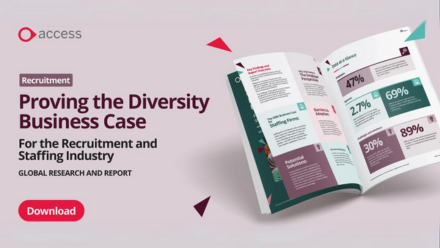Getting started with your social mobility journey
Last week, the APSCo Embrace Forum brought together individuals with touching and heartfelt personal stories and a passion for change, along with recruitment business experts offering step-by-step guidance on social mobility. The event left a lasting impact on everyone involved, leading to some very insightful conversations among our members and the panel.
For those of you that missed the session, here is what you need to know before starting your company’s social mobility journey:
1. Define your vision and take action
Do you truly care about social mobility and its impact on individuals and society? As a business, it is important to start by identifying what resonates most with you and your organisation. How does it align with your business values and brand? Where do you sit against your competitors? Once you have that clarity, it's essential to back it up with a plan and concrete action.
2. Get senior-level buy-in and support
Creating a culture of social mobility within a business requires senior-level buy-in and support. Communicate to them that it’s not just about where people are starting from when creating opportunities. Educate them about the importance of personal characteristics and how you can foster opportunities that tie in with career progression. Emphasise the business benefits of implementing a social mobility plan such as improved employee engagement, increased diversity and inclusion, enhanced reputation, and access to a broader talent pool.
3. Communicate your motivations clearly to acquire data
To effectively gather data on social mobility from your staff, it is essential to communicate your vision. Make it clear that the purpose of collecting data is to support social mobility and create a more inclusive working environment. Assure your staff that all data collected will be handled confidentially and used for appropriate business purposes. Don’t expect a high response rate off the bat but keep communicating your messaging and engage your staff in the data collection process.
4. Use targets as a guide, not as the sole goal
Once the data starts coming in, setting targets can be a helpful tool in driving social mobility efforts. They provide a tangible objective to work towards and help organisations track their progress. However, it is important to recognise that targets are not the sole answer. They should be used as a guide rather than the ultimate measure of success. True social mobility requires a comprehensive and holistic approach that goes beyond meeting numerical goals.
For further resources to support you in this journey, visit our APSCo Embrace Hub Social Mobility page.
We would like to extend our gratitude to James Fellowes and Chance Bleu-Montgomery from Bridge of Hope Careers for moving us with their personal stories and opening our eyes. We would also like to thank Tim Campbell, Paul Modley from AMS, and Nicola Ihnatowicz from Trowers & Hamlins for sharing their expertise and business journeys. Their insights have enriched our understanding of social mobility and provided us with valuable guidance for making a difference.
Register for our upcoming forums and meetings here.


